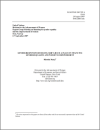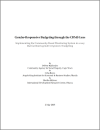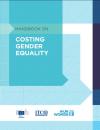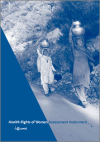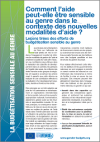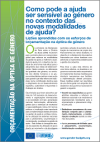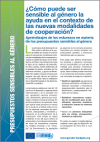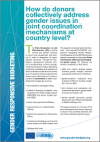FOUND 113 RESULTS
This paper uses examples from Australia and the Pacific Island Countries and Territorities to address the following questions:How can we assess a government's achievements in gender responsive budgeting? How can gender responsible budgeting be made sustainable in the face of change? What can we expect from GRBs? The paper was presented in a context of increasing evidence that GRB are a positive force in promoting a more equitable distribution of public resources and benefits of development for...
The paper suggests how the Community-Based Monitoring System (CBMS), developed and implemented in 14 countries over the last ten years with financial support from the Canadian International Development Research Centre (IDRC), can be used to facilitate gender-responsive budgeting (GRB) at the local level. In particular, it looks at how CBMS can be used to support local-level GRB (LLGRB) initiatives of civil society and local government.
The Handbook is a comprehensive, step-by-step guide to costing gender equality priorities. It responds to the growing demand for guidance on estimating the financing needs for achieving gender equality commitments.
The Health Rights of Women Assessment Instrument (HeRWAI) is a tool developed by the Humanist Committee on Human Rights (HOM) in 2006 to enhance lobbying activities for better implementation of women's health rights. A HeRWAI analysis links what actually happens with what should happen according to the human rights obligations of a country.
The Paris Declaration on Aid Effectiveness (PD) commits donors and partner countries to reform aid management and delivery in order to strengthen its development outcomes. Through the Declaration, development partners commit to implementing common arrangements for planning, funding, disbursing, monitoring, evaluating and reporting on donor activities and aid flows at country level. To respond to these requirements, donors have collectively put in place a number of mechanisms to better coordinate...
The Paris Declaration on Aid Effectiveness (PD) commits donors and partner countries to reform aid management and delivery in order to strengthen its development outcomes. Through the Declaration, development partners commit to implementing common arrangements for planning, funding, disbursing, monitoring, evaluating and reporting on donor activities and aid flows at country level. To respond to these requirements, donors have collectively put in place a number of mechanisms to better coordinate...
The Paris Declaration on Aid Effectiveness (PD) commits donors and partner countries to reform aid management and delivery in order to strengthen its development outcomes. Through the Declaration, development partners commit to implementing common arrangements for planning, funding, disbursing, monitoring, evaluating and reporting on donor activities and aid flows at country level. To respond to these requirements, donors have collectively put in place a number of mechanisms to better coordinate...
This paper provides guidance on how to make Public Finance Management (PFM) reforms gender responsive. It presents an overview of PFM reforms and explains how and why they are important to the achievement of gender equality outcomes. The paper aims to link ongoing work on gender responsive budgeting (GRB) with broader PFM reform efforts by increasing understanding of GRB among PFM practitioners and increasing understanding of PFM reforms among gender experts to support better results for gender equality and women's empowerment.
The Paris Declaration on Aid Effectiveness (PD) commits donors and partner countries to reform aid management and delivery in order to strengthen its development outcomes. Through the Declaration, development partners commit to implementing common arrangements for planning, funding, disbursing, monitoring, evaluating and reporting on donor activities and aid flows at country level. To respond to these requirements, donors have collectively put in place a number of mechanisms to better coordinate...
Well-being gender budgeting (WBGB) experiences use a multidimensional approach for planning and budgeting combining the Capability Approach along with gender responsive budgeting. However, what happens to the other well-being budgeting initiatives that do not explicitly include this «gender focus» in their conceptualization? This article explores the gender biases that can be found in well-being budgeting and the challenges of integrating a gender perspective into these practices. It...
